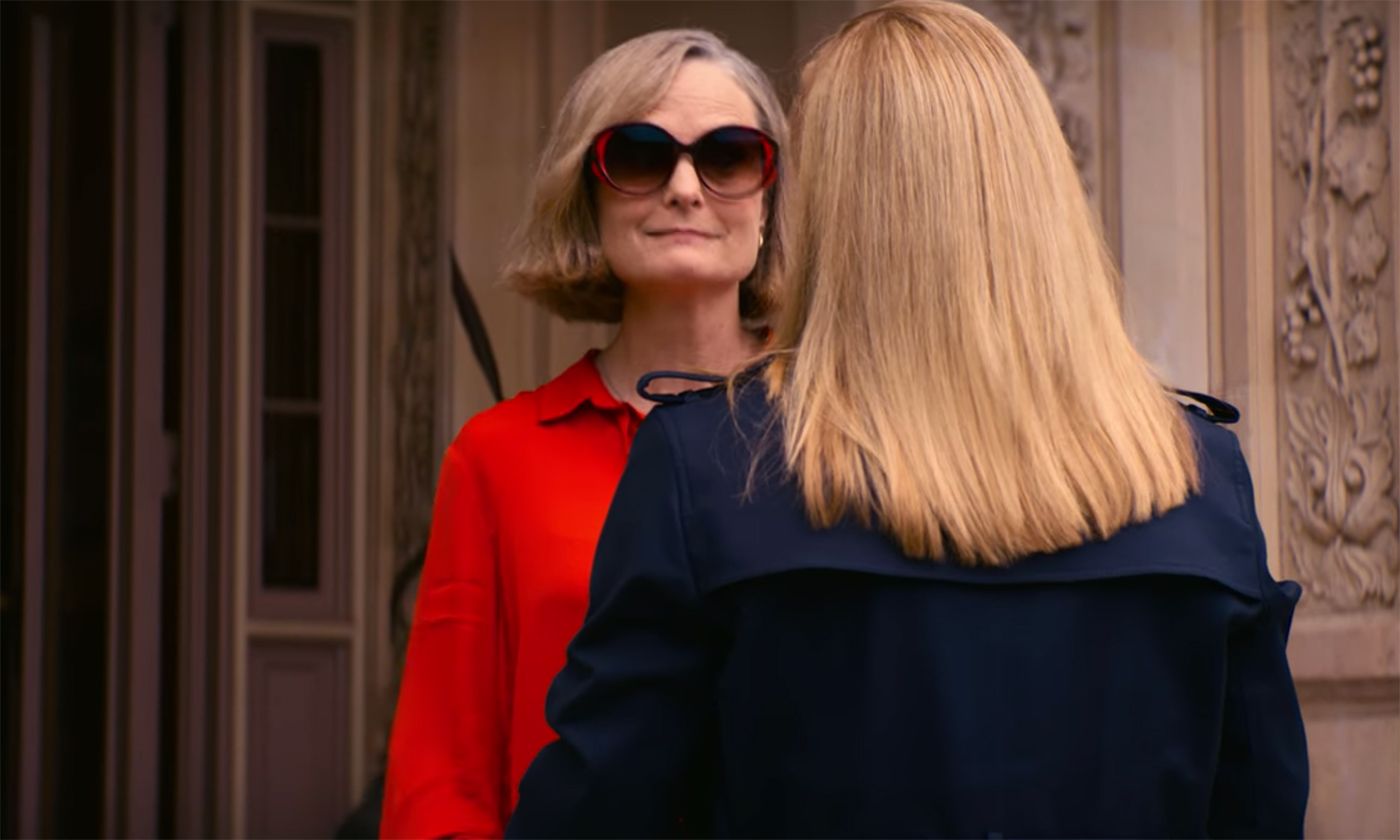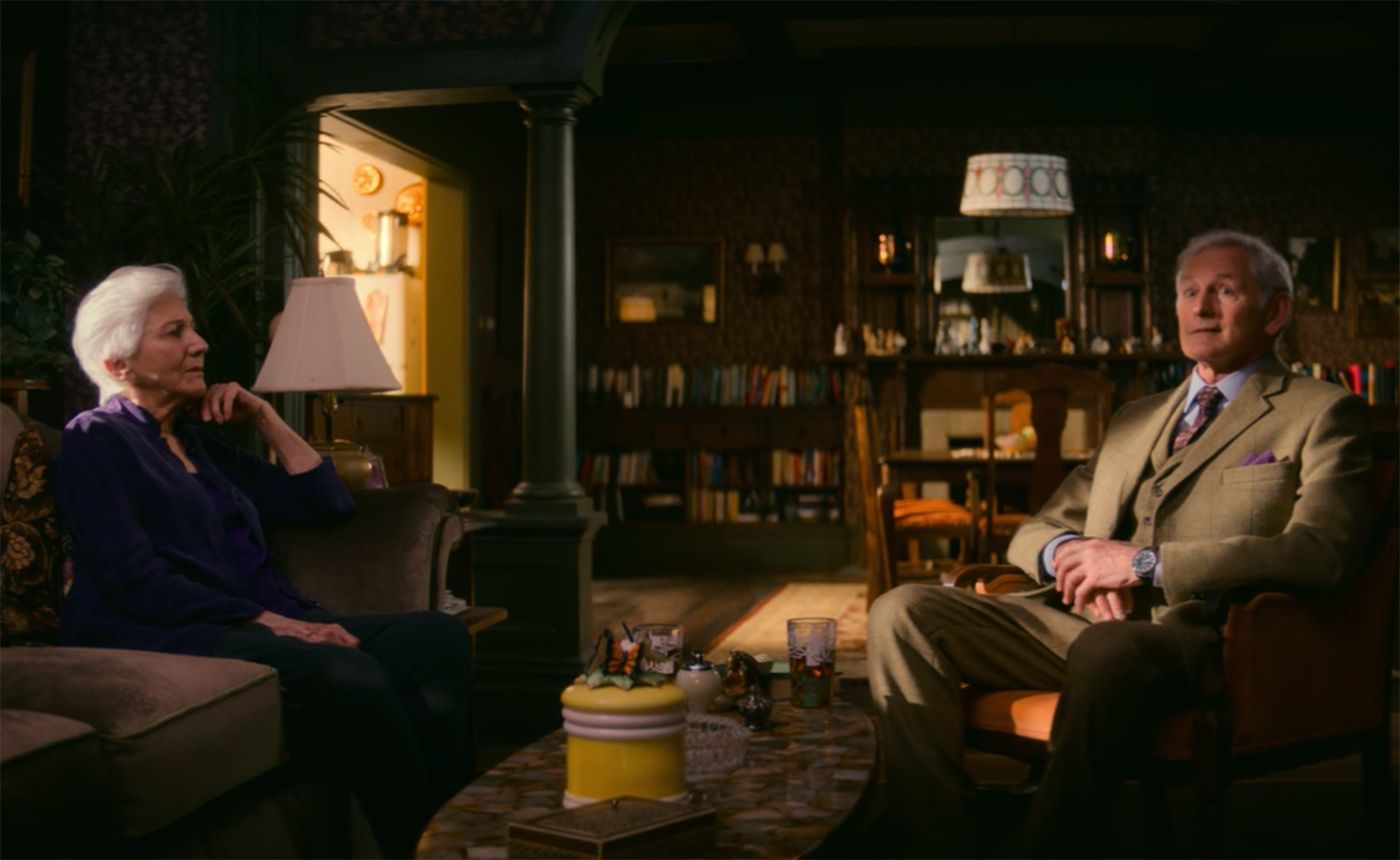Following its world premiere at the Castro Theatre in April, when one audience got to see Episode 1 of the rebooted series, Armistead Maupin's Tales of the City dropped all its 10 new episodes on Netflix on Friday.
You can read SFist's initial take here, and see the glorious trailer, but first things first: There is no escaping the nostalgic feels of seeing Laura Linney return to San Francisco as the earnest, goofy, and endearing Mary Ann Singleton — a character she first played in the 1993 PBS miniseries, and continued to play in the 1998 and 2001 Showtime followups. For many of us who moved to San Francisco in the last couple decades, Linney was the one who came before us, the one we watched arrive here wide-eyed and immediately in love with this place. And while the first miniseries showed us San Francisco in the late 1970s, the reboot brings us to the present day — with Mary Ann and her husband confronted by a homeless man outside the window of their Uber at Church and Market in the first scene of Episode 2.
One point of contention that fans are likely to notice: Mary Ann spots the Castro Safeway in Episode 2 and says it's where she met Michael "Mouse" Tolliver, but we all know she met him at the Marina Safeway, which was a famous pickup spot in the 1970s.
The tone of the original series carries through in the reboot, complete with Olympia Dukakis' warm and motherly return as Anna Madrigal — director Alan Poul said that the entire production based itself in New York in order to accommodate Dukakis, who at 87 no longer travels. But the messages in the new series are more contemporary, in particular focusing on trans identity — something that was simply a big-shock reveal with Madrigal's character at the end of the first miniseries. Head writer Lauren Morelli, who previously worked on Orange Is the New Black, built an all-queer writers' room for the new Tales. And she tells the Hollywood Reporter, "“It felt really important to have the show represent the world as we see it. It has to be diverse but also specific to the queer community."
Part of that diversity is the inclusion of trans character Jake, played by one-name actor Garcia, who identifies as non-binary. Jake serves as Madrigal's caregiver, and in Episode 2 we find him addressing the awkward issue of his newfound attraction to men with his girlfriend Margot.
At the red-carpet premiere in April, Linney said to the Hollywood Reporter, "Our world is in a very confused place now. And there are topics that are difficult for people to talk about. Similar to how we felt with the first series of Tales, with the AIDS crisis." She added, "It's a different type of polarizing now, but the series is just as necessary to help us talk about it."
Episode 2 also reintroduces Barbara Garrick, who plays one of Maupin's original characters in his columns, the Dede Wilsey socialite stand-in character DeDe Halcyon Day. Singleton climbs the hills of Presidio Heights to visit DeDe in her mansion and sip some $600 wine while she discusses why she wants to stay a bit longer in SF.

A few surprise guests among the recurring characters in the new series include Victor Garber, who plays an elder gay man who volunteers with a group called Rainbow Readers — he comes to visit Anna in Episode 2 to read some Tennyson, because her eyesight is fading — and Molly Ringwald, whose role I'll leave secret so as to avoid spoilers. Also in the cast are Girls star Zosia Mamet, Looking star Murray Bartlett (as Mouse), and Bob the Drag Queen.

The new series also delves into Anna's past, specifically her younger years as a trans woman in 1960s San Francisco, hanging out at Compton's Cafeteria — the site of the infamous 1966 queer riot that predated Stonewall by three years. Actress Jen Richards plays young Anna in a flashback episode that also includes a reenactment of the riot.
You aren't going to find a ton of cynicism in the new Tales, either about San Francisco or modern life in general. But you are going to find a warm blanket of heartening moments and shimmering shots of the city. This was never a series about harsh realities so much as it was a buffed and polished fantasy of SF life, reflecting back a fictional city through a prism of tidy tropes and shared joints at 28 Barbary Lane. For that alone we may as well be grateful.

